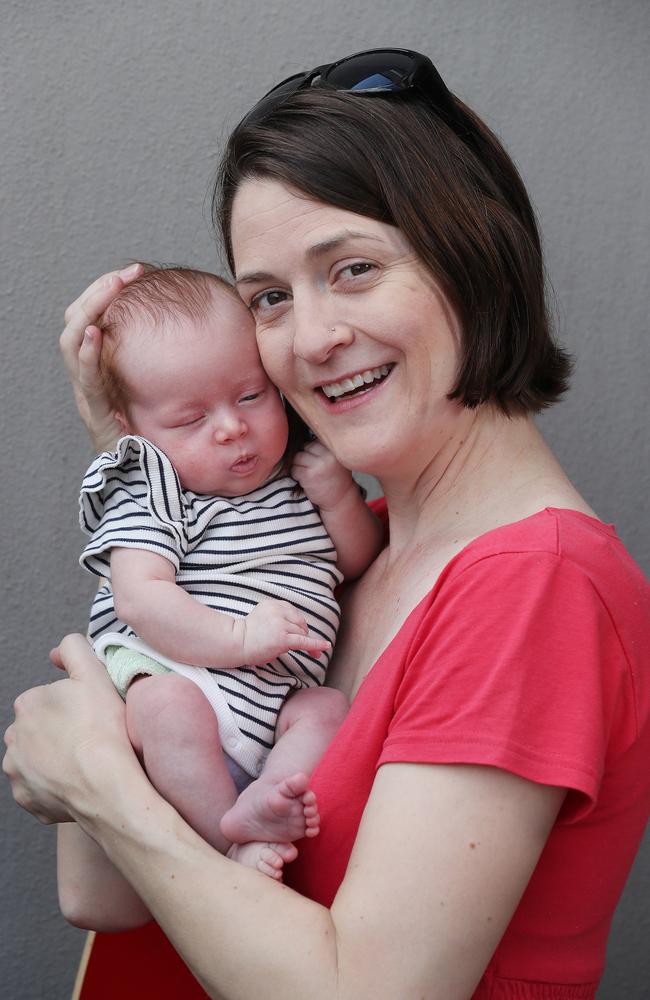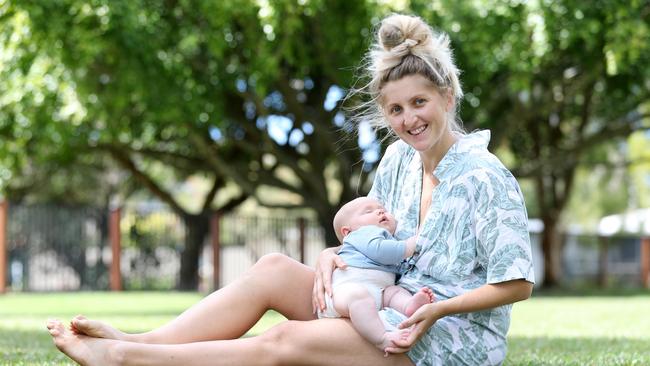More Queensland mums being sent home the same day they give birth
Thousands of mums a year are being sent home from hospital on the same day they give birth as an exodus of women from private obstetrics overwhelms Queensland’s public hospital system.
QLD News
Don't miss out on the headlines from QLD News. Followed categories will be added to My News.
Queensland mums are being sent home from the birthing suite as an exodus from private obstetrics overwhelms the already buckling public health system.
In a steadily growing trend that has staggered health experts, nearly 10 mums a day are leaving hospital the day they give birth.
Last year 43,449 babies were delivered in public hospitals, compared to just 2124 births in private.
Surge in sperm donations during COVID-19 lockdown
AMAQ reveals doctors fears on rural obstetric services
Eating disorders are not a choice, experts warn
National Association of Specialist Obstetricians and Gynaecologists president Gino Pecoraro said the system was failing.
“Make no mistake, the exit from private hospitals shows an extreme systems failure and the entire health system is heading for disaster,” he said.
“The exit has been steady in recent years and we are now in a recession, so it is likely to get worse unless the Federal Government makes moves to make private obstetrics more affordable. Australian families should have choice of provider – this is crucial to the continuation of a viable and efficient public hospital system.
“I am blown away that mums are leaving hospitals pretty much straight from the labour ward. The mother’s milk hasn’t yet come in so many get little help with breastfeeding or post-natal care.”

Sunshine Coast mum Brittany Keys is one of many whose birthing experience was brief, to say the least.
Ms Keys told The Sunday Mail she was rushed in to give birth at breakfast and was home in time for lunch – while others confirmed shorter stays were standard among circles of new mums.
The peri-natal data shows the number of women leaving hospital on the same day they give birth is rising.
In 2019 there were 3466 and in 2017 the number was 3197.
“I believe that some babies don’t even get a full check from a paediatrician before discharge,” Assoc Prof Pecoraro said.
“There is no sign of more state maternity hospitals being built to accommodate the surge in patients.”
A NASOG spokeswoman said many private obstetricians were retiring early, while young specialists were vying for jobs in the public system.
Assoc Prof Pecoraro said that young people could not afford premium health insurance policies that covered having babies and Medicare rebates had not moved with the times and were inadequate.
One new mum told The Sunday Mail she had her child in private and stayed a week, but noticed that the ward was almost empty.
“It was extremely quiet on the ward … when I went in to get induced, we had to walk around the whole ward to find anyone, because there was only one other patient there that night,” she said.
Jenny Gamble, professor of midwifery at Griffith University and chair and director of Midwifery Maternity Provider Organisation Australia said out-of-pocket costs and value for money are the major drivers of the gradual exodus from private obstetrics.
The maternity expert said if the health system performed fewer “avoidable C-sections” there would be more money for longer in-hospital recovery and most importantly, better home-based care for women who would prefer to be at home.
“Going straight home is not the issue – the issue is whether the decision to go home is based on the needs and preferences of the woman. There needs to be quality care regardless of setting, whether home, birth centre, hospital,” she said.
Assoc Prof Pecoraro said NASOG was in discussions with the Chief Medical Officer, the Department of Health and Federal Health Minister Greg Hunt to throw a lifeline to private obstetricians.
“Maintaining a consistent financial experience for patients will be key to increasing the uptake of private obstetric services. We suggest that a mechanism that benchmarks fees, MBS rebates, private health insurance benefits and appropriate indexation could be established to provide that consistency,” he said.
A Queensland Health spokesman said public maternity services provide care to two-thirds of the state’s mums-to-be.
“Women in our care continue receiving safe, world-class services before, during and after they give birth,” he said.
Queensland Health does have a policy to offer two to three in-home visits from a midwife and women have the option to discharge early.
“Many women report their preference to receive their post-natal care in the home, rather than a noisy hospital. Early discharge works well when there is support from a known midwife including daily visits, along with phone and text support as needed,” Alecia Staines from the Maternity Consumer Network said.

No stringing it out with baby banjo
Breakfast at home, a rush to hospital to have a baby, and back home in time for lunch.
That was the experience of mum Brittany Keys, who had baby Banjo nine weeks ago at the Sunshine Coast University Hospital.
“I was out of hospital on same day as the birth with both my children. I can’t complain about my experience but I opted to hire a private midwife to help me at home with post-natal care. I decided that would cost less than the out- of-pocket expenses to go private,” Ms Keys said.
“Without that help I would have been a bit scared, especially with my first child, Poppy, as I struggled with breastfeeding and definitely needed guidance,” she said.
Personal midwife care cost the family $3000. Out-of-pocket expenses for a private birth can hit double that figure for some.
“Continuity of care with a midwife you trust is the way of the future for having babies, that’s what I feel,” the mum said.
Brisbane woman Carolyn Smith had her second baby, Matilda, four weeks ago at the Royal Brisbane and Women’s Hospital.
“It was a good birth with no complications and I was told I was free to go home on the same day but I didn’t want to leave at night, so I stayed until the next morning. As it was my second baby, I was OK to go home,” she said.
“When I think that the experience was free, I was more than happy to go no-frills and take my chances in the public system. It all worked out well for me,” she said.


